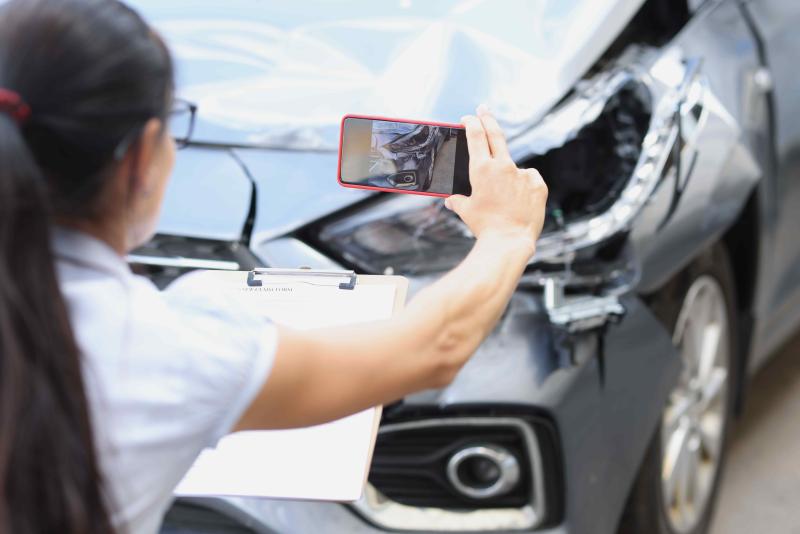Personal Accident Lawyer: How to Use Photographic Evidence Effectively in Your Claim

In the aftermath of a car accident, gathering evidence is crucial for building a strong case. Among the various types of evidence, photographs can be particularly powerful. They provide a visual representation of the scene, the vehicles involved, and any injuries sustained, which can significantly impact the outcome of your claim. This article will discuss how to use photographic evidence effectively in your claim and the vital role of a car accident lawyer in San Jose in this process.
The Importance of Photographic Evidence
Photographic evidence plays a pivotal role in car accident claims and with your car crash lawyer for several reasons:
- Visual Documentation: Photos capture the scene as it was at the moment of the accident, providing a clear account of what transpired. This visual documentation can be more persuasive than written descriptions alone.
- Establishing Liability: Photographs can help establish liability by showing the positioning of vehicles, road conditions, traffic signs, and any other relevant factors that contributed to the accident.
- Highlighting Damages: Photos of vehicle damage, injuries, and the accident scene can illustrate the extent of the damages suffered, which is essential for determining compensation.
- Countering Disputes: If the other party contests liability or the extent of your damages, photographic evidence can serve as an objective reference that supports your claims.
When and How to Capture Photographic Evidence
Capturing effective photographic evidence requires planning and attention to detail. Here’s a step-by-step guide on when and how to take these photos:
#1. At the Accident Scene
If possible, take photos immediately following the accident. This is when the scene is most relevant, and details are fresh.
- Wide Shots: Capture wide shots of the entire scene from multiple angles to provide context.
- Close-Ups: Take close-up shots of vehicle damage, skid marks, road conditions, and any relevant debris.
- License Plates: Photograph the license plates of all vehicles involved.
- Injuries: If safe to do so, document any visible injuries you or your passengers have sustained.
#2. Surrounding Environment
Don’t forget to photograph the surrounding environment:
- Traffic Signs and Signals: Capture images of any traffic signs, signals, or signals that may be relevant to the accident.
- Weather Conditions: Document weather conditions at the time of the accident, such as rain, fog, or snow, which could have contributed to the crash.
#3. After Medical Treatment
Once you've received medical treatment, continue documenting your injuries over time:
- Progression of Injuries: Take photos of your injuries at various stages of healing. This can help illustrate the pain and suffering you’ve endured.
- Treatment Documentation: Capture images of any medical equipment, treatment sessions, or rehabilitation exercises to demonstrate the extent of your recovery process.
Organizing and Storing Photographic Evidence
Once you have collected photographic evidence, it’s essential to organize and store it properly to ensure it is accessible and usable when needed:
- Label and Date: Clearly label each photo with a description and date taken. This helps maintain a clear timeline of events.
- Digital Backup: Store copies of the photographs in multiple locations, such as cloud storage, external hard drives, or USB drives, to prevent loss.
- Create a Timeline: Organize your photos chronologically, creating a visual timeline of the accident and subsequent injuries. This can help in presenting your case clearly.
Presenting Photographic Evidence in Your Claim
When it comes to using photographic evidence in your claim, presentation matters:
- Work with Your Car Accident Lawyer: Collaborate with an auto accident attorney to determine which photographs are most relevant and impactful for your case. They can help you choose images that best support your claims.
- Incorporate Photos into Your Documentation: Include your photographs in the documentation you submit to the insurance company or during legal proceedings. High-quality, relevant photos can enhance your case significantly.
- Use Visual Aids: In court or mediation sessions, consider using visual aids, such as PowerPoint presentations or printed photo boards, to highlight critical evidence.
Addressing Potential Challenges
While photographic evidence can strengthen your case, there are potential challenges to be aware of:
- Quality of Photos: Ensure that the photographs are clear and high-quality. Blurry or poorly lit images may not have the desired impact.
- Disputes Over Evidence: The other party may dispute the relevance or interpretation of your photos. Working with an experienced car accident injury law firm can help counter these disputes effectively.
- Legal Requirements: In some cases, there may be specific legal requirements for presenting evidence in court. An attorney like Super Woman Super Lawyer can guide you on these requirements to ensure compliance.
Conclusion
Photographic evidence is a powerful tool in car accident claims, providing vital documentation that can support your case. From capturing the accident scene to documenting the progression of injuries, these images can make a significant difference in the outcome of your claim.
By working with a skilled car accident lawyer, you can effectively gather, organize, and present photographic evidence to maximize your chances of receiving fair compensation. Remember, the more thorough and organized your photographic evidence, the stronger your claim will be. Don’t underestimate the power of a picture—when it comes to car accidents and your injuries lawyer, they can indeed be worth a thousand words.
Post Your Ad Here
Comments